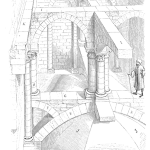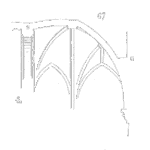
Change Management Success
Abstract
Greg and Fred discuss organizational change management and behavior change. Greg’s change management is sell the sizzle. Fred’s is give them the steak. Discover why?
ᐅ Play Episode
Your Reliability Engineering Professional Development Site
by Greg Hutchins Leave a Comment

Greg and Fred discuss organizational change management and behavior change. Greg’s change management is sell the sizzle. Fred’s is give them the steak. Discover why?
ᐅ Play Episode
by Greg Hutchins Leave a Comment

Greg and Fred discuss the range of elements involved with change management.
ᐅ Play Episode
by James Kovacevic Leave a Comment

James and Fred discussing how being good at change management matters for reliability folks.
ᐅ Play Episode

The organizations are always going through one or the other change. Whether it’s the change in roles and responsibilities, the change in the technology or the change in the CMMS itself. Everything changes in the industry all the time and it is always at a higher rate than the organizations keep up with it. When we talk about the change, it always starts with the change in processes. When a business process changes, everything else changes with it. Whenever a change is to be implemented, the first question that pops up in everyone’s mind is ‘WHY’.
In this episode, we covered:

In this weeks article, we’ll explore how the three disciplines (product development, process improvement and project management) can enable change management.
First, it’s worth reflecting on how these disciplines fit together. Starting with product development our goal is to understand customer value, and to optimize the product (or service) by maximizing customer value and minimizing cost. It can be seen that, process improvement naturally complements this objective as way to further reduce costs. In addition, project management establishes how product development and process improvement is planned, executed, controlled and monitored.
Now let’s look at some key attributes of change management, along with elements of the three disciplines mentioned above.
by Fred Schenkelberg 2 Comments

The process to design and deliver a reliable product involves identifying risks. Taking action to understand or mitigate those risks involves much of the day to day work of reliability engineering.
Taking action to set expectations and improve decisions involves change. Change of understanding, change of specifications, change of expectations, change of designs, processes, and results.
It is the changes, big and small, that occur that achieve the desired results for the customer and organization.
You also know that not every suggestion is greeted warmly. Not every proposal is funded. Not every recommendation is accepted. [Read more…]
by James Kovacevic Leave a Comment

This episode focuses on the change management and the impact that it can have on your maintenance program. So, what is change management? It occurs at different levels in the organizations but the most basic level—the people level—that makes the organizational culture needs to be tended first. It happens a lot that after the successful planning and scheduling, work execution seems to be fine in the short term but fails horribly in the long term because the change process was not addressed and handled properly at all the critical levels in the organizational framework. So, what things need to be addressed first?
ᐅ Play Episode
by Robert Kalwarowsky Leave a Comment

When you bring in a new project or process, how do you manage the change? Do you connect with the stake holders? Do you ensure the proper amount of time is taken in the design phase? What is your process?
In this episode I talk with Ronan O’Sullivan on his management of plant and process change and he outlines his steps to ensure a successful project. It does not matter if the project is big or small this methodology can be applied to it all.
Episode Shout Outs:
Ronan O’Sullivan – https://www.linkedin.com/in/ronan-o-sullivan-25726a37/
If your company sells products or services to engaged maintenance & reliability professionals, tell your marketing manager about Maintenance Disrupted. If you’d like to discuss advertising, please email us at maintenancedisrupted@gmail.com
Check out our website at www.maintenancedisrupted.com and sign up for the weekly disruption newsletter with bonus content. If you like the show, please tell your colleagues about it and follow maintenance disrupted on LinkedIn and YouTube.
Follow Maintenance Disrupted on LinkedIn
https://www.linkedin.com/company/maintenancedisrupted
Music: The Descent by Kevin MacLeod
Link: https://incompetech.filmmusic.io/song/4490-the-descent
License: http://creativecommons.org/licenses/by/4.0/
by Robert Kalwarowsky Leave a Comment

On this week’s episode, I sit down with Ricky Smith and talk about culture change, spare room management and taking the CMRP. I hope you enjoy it!
Follow Ricky Smith on LinkedIn at:www.linkedin.com/in/rickysmithcmrp/
Follow Rob Kalwarowsky on LinkedIn at:www.linkedin.com/in/robert-kalwarowsky-p-eng-03a43552/
For any questions or inquiries: emailrobsreliabilityproject@gmail.com
by Mike Sondalini Leave a Comment

‘Change To Win’ is a structured change management program used to introduce needed changes, best practices and innovative improvements into an organisation. A ‘Change To Win’ team consisting of managers, supervisors and people from the workplace is assembled to implement the changes and is responsible to plan how the organisation will adopt the changes, to trial them and then implement them into standard practice.
[Read more…]by Mike Sondalini Leave a Comment

Your views on why enterprise asset management fails intrigued me. I am currently undertaking a master’s study on “Understanding the Difficulties of Developing an Effective Planned Preventive Maintenance Regime at an underground coal mine”.
My masters is based on finding the reasons why in the mining field the other methods of maintenance methodologies such as RCM, TPM, Six Sigma, etc. do not seem to get embraced by the mining maintenance teams, and there is always a weak attempt to implement them on the part of management.
[Read more…]by Greg Hutchins Leave a Comment

Safety Projects International Inc. discusses how to handle different types of crises that may arise at your facility. If 2020 has shown us anything, it’s that we need to adapt to outside elements that may affect your team processes and procedures. Let’s get started on a crisis management plan.
[Read more…]
In any given PSM audit, the auditors will usually face one or more situations that represent a dilemma because the situation has not happened before, or no thought has been given on how to resolve it. These dilemmas usually require the individual auditor and/or the audit team leader resolve the situation in the field. These “on the fly” resolutions require both astute judgment and practical solutions that fit not only the governing regulations or company/facility standards for PSM, but also how those mandatory requirements should be interpreted and applied to the specific design, operations, and PSM program of the facility being audited.
The PSM audit dilemmas described in this paper are based on the experiences of seasoned auditors during actual PSM audits. Several of them are PSM adaptations of those published by Safety Projects International Inc., et al in 5 Star Health & Safety Management System™ Health and Safety Audits. In general, there are no absolute right or wrong answers to solving these dilemmas, although in some cases a resolution might seem obvious.
[Read more…]by Mike Sondalini Leave a Comment

When you run machines above design rates that decision goes against all that we know about creating high plant uptime and outstanding equipment reliability—in fatigue situations 10% additional stress will cost you ten breakdowns.
The dominate factor in machine life and production plant uptime is the stress in your machines’ working parts. The stress developed in a part’s material of construction microstructure is directly linked to the force applied to it. It does not matter where the force comes from or why it is applied, once the stress in your parts go beyond their microstructure limits your machines fail. If you want to run at high production rates first ensure that your working parts cannot become overstressed.
[Read more…]
First master the fundamentals
Basketball Olympic Gold Medallist Larry Bird
The industrial world today is abuzz with a lot of terminologies and jargons mainly stemming from today’s technological advances in the areas of sensors, data, communication and electronics. Each day brings in something new for the Asset Owners from the service providers who claim that their technology, product or service is ‘unique’ and has been ‘never seen before’. While a lot of these offerings are innovative in many aspects, the real question lies in how do they fit within the ‘fundamentals of the Asset Management’? [Read more…]
 Ask a question or send along a comment.
Please login to view and use the contact form.
Ask a question or send along a comment.
Please login to view and use the contact form.